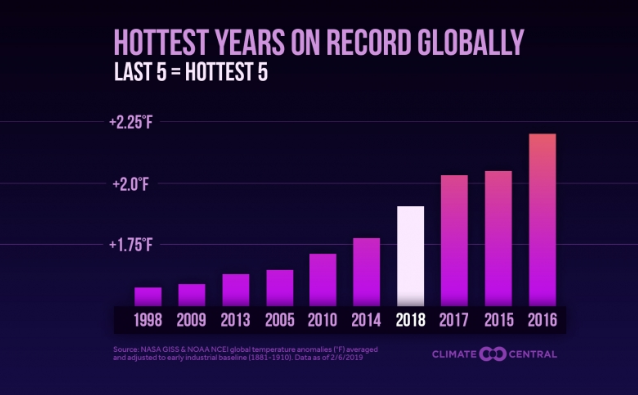Each of the Past Six Years Were Among the Six Hottest in Recorded History–But What Does That Mean?

OK, let’s compute the probability that each of the past six years were among the six hottest out of 140, if this is a product of chance.
First, we need to realize that anything that happened before records were being kept has no bearing on this analysis, whether that period of time was 10 years or 10 billion years.
From there, the easy way to do this is to realize that the probability of one year being in the top 6 is 1 in 6/140, or 1 in 23.3. Since the probability of random things happening together is the arithmetic product of the probabilities of their happening separately, the probability of this happening 6 times consecutively is 23.3^6, or 1 in 190 million.
To do the precise math, we need to realize that once a slot in the top 6 is taken, only 5 remain; once a second slot in the top 6 is taken, only 4 remain, etc. Thus the actual probability is far smaller than that. It’s:
1 in (140*139*138*137*136*135 / 6*5*4*3*2*1 ), which is 1 in 9.4 billion.
That doesn’t mean it couldn’t have happened, but it does mean that people who assert that it did are idiots.
